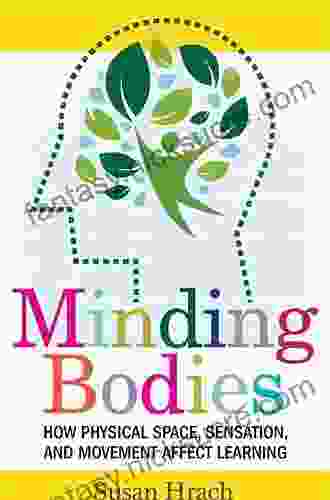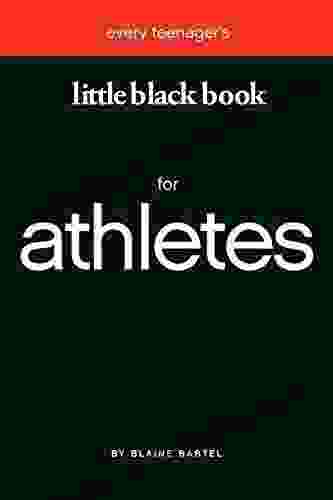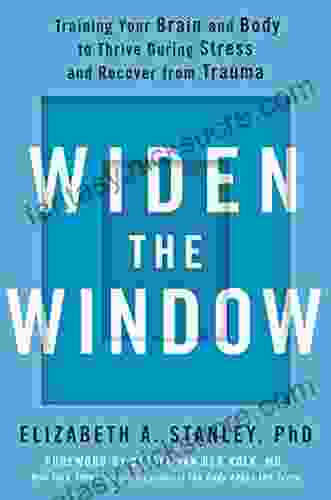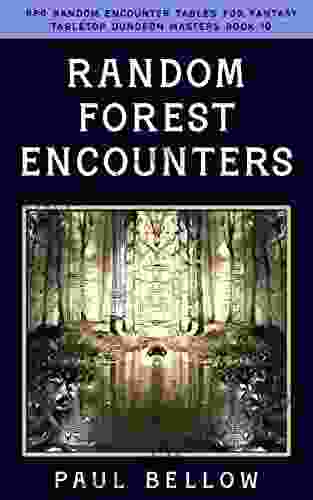How the Physical Space, Sensation, and Movement Impact Learning, Teaching, and Higher Education

The physical environment in which learning takes place plays a crucial role in shaping the learning experience for students and educators alike. The physical space, including factors such as lighting, temperature, noise levels, and spatial arrangements, can have a significant impact on attention, engagement, and overall learning outcomes. Furthermore, the way in which students and educators use their physical space, including their posture, movement, and sensory experiences, can influence their cognitive processes, emotional regulation, and social interactions. This article explores the interconnections between physical space, sensation, and movement, and their implications for teaching, learning, and higher education.
The physical space in which learning occurs can have a profound impact on student attention, engagement, and learning outcomes. Factors such as lighting, temperature, and noise levels can influence students' ability to focus, concentrate, and retain information. For example, studies have shown that natural lighting can improve student performance on standardized tests, while high levels of noise can lead to distractions and difficulty concentrating.
The spatial arrangement of the learning environment can also affect student learning. A well-designed classroom can promote collaboration, engagement, and active learning, while a poorly designed classroom can hinder student participation and learning. For example, a classroom with rows of desks facing the instructor can create a passive learning environment, while a classroom with tables and chairs arranged in groups can encourage student interaction and collaboration.
4.7 out of 5
| Language | : | English |
| File size | : | 1572 KB |
| Text-to-Speech | : | Enabled |
| Screen Reader | : | Supported |
| Enhanced typesetting | : | Enabled |
| Word Wise | : | Enabled |
| Print length | : | 224 pages |
The human senses play a vital role in learning. Sensory experiences, such as sight, hearing, touch, smell, and taste, provide students with information about the world around them and help them to make sense of their experiences. Sensory experiences can also be used to enhance learning and memory. For example, studies have shown that students who are exposed to music while studying can improve their recall of information.
In addition to the traditional senses, recent research has also highlighted the importance of interoception, the sense of one's own body. Interoception is essential for regulating emotions, maintaining attention, and coordinating movement. For example, studies have shown that students with poor interoceptive awareness are more likely to experience attention deficits and learning difficulties.
Movement and learning are closely intertwined. Physical activity can improve blood flow to the brain, increase oxygen levels, and release endorphins, which can all enhance cognitive function, attention, and memory. Movement can also help students to regulate their emotions and stress levels, which can create a more positive and productive learning environment.
There are many different ways to incorporate movement into the learning environment. Some educators use movement breaks, such as short periods of stretching or walking, to help students stay focused and engaged. Others use movement-based activities, such as games or simulations, to teach specific concepts or skills.
The research on the physical space, sensation, and movement has important implications for teaching and learning in higher education. Here are a few key considerations for educators:
- Create a positive and supportive learning environment: The physical space in which learning occurs should be designed to promote comfort, engagement, and collaboration. This includes providing adequate lighting, temperature control, and noise reduction. It also includes arranging the space in a way that encourages student interaction and movement.
- Use sensory experiences to enhance learning: Sensory experiences can be used to make learning more engaging and meaningful. Educators can use visual aids, music, scents, and tactile experiences to help students learn new concepts and skills.
- Incorporate movement into the learning experience: Movement can help students stay focused, engaged, and motivated. Educators can incorporate movement breaks, movement-based activities, and active learning strategies into their teaching.
The physical space, sensation, and movement are all important factors that can impact learning and teaching in higher education. By understanding the interconnections between these factors, educators can create learning environments that are more conducive to student success.
- The Impact of Physical Space on Learning
- Sensory Processing and Learning
- The Role of Movement in Learning
4.7 out of 5
| Language | : | English |
| File size | : | 1572 KB |
| Text-to-Speech | : | Enabled |
| Screen Reader | : | Supported |
| Enhanced typesetting | : | Enabled |
| Word Wise | : | Enabled |
| Print length | : | 224 pages |
Do you want to contribute by writing guest posts on this blog?
Please contact us and send us a resume of previous articles that you have written.
 Fiction
Fiction Non Fiction
Non Fiction Romance
Romance Mystery
Mystery Thriller
Thriller SciFi
SciFi Fantasy
Fantasy Horror
Horror Biography
Biography Selfhelp
Selfhelp Business
Business History
History Classics
Classics Poetry
Poetry Childrens
Childrens Young Adult
Young Adult Educational
Educational Cooking
Cooking Travel
Travel Lifestyle
Lifestyle Spirituality
Spirituality Health
Health Fitness
Fitness Technology
Technology Science
Science Arts
Arts Crafts
Crafts DIY
DIY Gardening
Gardening Petcare
Petcare Ezekiel Eversand
Ezekiel Eversand David Joyce
David Joyce Eric H Cline
Eric H Cline Ross Bonander
Ross Bonander Marc Bona
Marc Bona Dan Yaccarino
Dan Yaccarino G William Barnard
G William Barnard Editors Of Sports Illustrated
Editors Of Sports Illustrated Conway X Bowman
Conway X Bowman Gregg Jackson
Gregg Jackson Kevin C Kelleher Md Md
Kevin C Kelleher Md Md Daniel J Velleman
Daniel J Velleman Joshua Foer
Joshua Foer Callum Roberts
Callum Roberts Elizabeth Thompson
Elizabeth Thompson Wendy Doniger
Wendy Doniger Linda D Dahl
Linda D Dahl Brienne Murk
Brienne Murk Rachel Burgess
Rachel Burgess Ernest Raymond
Ernest Raymond Zach Schonbrun
Zach Schonbrun Ryan Johnston
Ryan Johnston Sara Low
Sara Low Colleen Graves
Colleen Graves Nrup Parikh
Nrup Parikh Shawn Levy
Shawn Levy John Mccannon
John Mccannon John Mccollister
John Mccollister Jacques Steinberg
Jacques Steinberg Karen Armstrong
Karen Armstrong Mindy Mcginnis
Mindy Mcginnis D C Haenlien
D C Haenlien Laurie Rubin
Laurie Rubin Douglas W Ota
Douglas W Ota Steven M Levy
Steven M Levy Nicole R Taylor
Nicole R Taylor J T Williams
J T Williams Gary Kamiya
Gary Kamiya Martyn Denscombe
Martyn Denscombe Jojo Siwa
Jojo SiwaMax Youngquist
 Freddie Fernandez
Freddie Fernandez John Brierley
John Brierley Billy Martin
Billy Martin Linda Bauer
Linda Bauer Oscar Nilson
Oscar Nilson Christian Smith
Christian Smith Charles Simpson
Charles Simpson Phil Genova
Phil Genova Simon Buxton
Simon Buxton Thomas Cleary
Thomas Cleary Russ Harris
Russ Harris Carolyn Schulz
Carolyn Schulz Bill Hammack
Bill Hammack Bryan Irwin
Bryan Irwin Mark Young
Mark Young Charles Duhigg
Charles Duhigg Paul Brummell
Paul Brummell Tiffany Loggins Psyd
Tiffany Loggins Psyd Patrick Mcginty
Patrick Mcginty Stanislas Dehaene
Stanislas Dehaene Scott Wilson
Scott Wilson Charlie Craven
Charlie Craven Jamie Dumas
Jamie Dumas Elizabeth Winthrop
Elizabeth Winthrop Rupert Spira
Rupert Spira Charles A Rhodus
Charles A Rhodus Krista Tippett
Krista Tippett Al Walsh
Al Walsh Donncha Hanna
Donncha Hanna Eric A Weiss Md
Eric A Weiss Md Vernon G Zunker
Vernon G Zunker Carlos Castaneda
Carlos Castaneda Robert P Beebe
Robert P Beebe Dr Julissa Hernandez Nd Cnhp
Dr Julissa Hernandez Nd Cnhp Jeff Wheeler
Jeff Wheeler Sue L Hamilton
Sue L Hamilton John H Holland
John H Holland Olivia Gordon
Olivia Gordon Rabbi Jason Sobel
Rabbi Jason Sobel Mercedes Lackey
Mercedes Lackey Joan Roughgarden
Joan Roughgarden Michael D Alessio
Michael D Alessio Beck Weathers
Beck Weathers Sara Dyer
Sara Dyer T Edward Nickens
T Edward Nickens Marie Max House
Marie Max House Deborah Blum
Deborah Blum Megan Don
Megan Don Louis Sachar
Louis Sachar Jonathan Crichton
Jonathan Crichton Lynette Rushton
Lynette Rushton Megan Mcgrory Massaro
Megan Mcgrory Massaro Bill Gladstone
Bill Gladstone Jacqueline B Persons
Jacqueline B Persons Rebekah Nathan
Rebekah Nathan Katie Singer
Katie Singer George C Thomas
George C Thomas Ofer Gal
Ofer Gal John C Norcross
John C Norcross Valeria Ray
Valeria Ray P J E Peebles
P J E Peebles Bill Patton
Bill Patton Diondre Mompoint
Diondre Mompoint James P Allen
James P Allen Joshua Becker
Joshua Becker Joie Jager Hyman
Joie Jager Hyman Sanford Holst
Sanford Holst Frederica Relly
Frederica Relly Stephen Arterburn
Stephen Arterburn Dan Hamilton
Dan Hamilton Robert Greene
Robert Greene Greg Witt
Greg Witt John Kettle
John Kettle Ken Venturi
Ken Venturi Diana Wynne Jones
Diana Wynne Jones David Nirenberg
David Nirenberg Brad States
Brad States Michael J Epstein
Michael J Epstein Herbert Dorsey
Herbert Dorsey Jessica Taylor
Jessica Taylor Stephen L Morgan
Stephen L Morgan Paris Williams
Paris Williams Thomas Bailey
Thomas Bailey Joe Byers
Joe Byers Cheryl Marlene
Cheryl Marlene Ian Wilson
Ian Wilson Tiffany Bergin
Tiffany Bergin Scarlett Curtis
Scarlett Curtis Mike Gibson
Mike Gibson Neil D Jespersen
Neil D Jespersen Ingrid Chalufour
Ingrid Chalufour Kindle Edition
Kindle Edition Dan Murphy
Dan Murphy Dinah Bucholz
Dinah Bucholz Silvia Dunn
Silvia Dunn Sheila Mackechnie Murtha
Sheila Mackechnie Murtha Tara Bianca
Tara Bianca Frank S Ring
Frank S Ring Jedd K Parkinson
Jedd K Parkinson Jackie Bolen
Jackie Bolen Elsevier
Elsevier David E Johnson
David E Johnson Sabaa Tahir
Sabaa Tahir Shelby Mahurin
Shelby Mahurin Tom Humphrey
Tom Humphrey Tom Dodd
Tom Dodd T Whitmore
T Whitmore Mosby
Mosby Michael Volkmar
Michael Volkmar Jared Derksen
Jared Derksen Holly Jackson
Holly Jackson Claire Russell
Claire Russell Rob Steger
Rob Steger James Dashner
James Dashner Cj Andersen
Cj Andersen Supersummary
Supersummary Edwin H Friedman
Edwin H Friedman Melissa Layne
Melissa Layne Vukota Boljanovic
Vukota Boljanovic Kent Hrbek
Kent Hrbek Jarrett Dapier
Jarrett Dapier Kristopher Martel
Kristopher Martel Marty Gitlin
Marty Gitlin Elizabeth King
Elizabeth King Bill Nowlin
Bill Nowlin Michael J Tougias
Michael J Tougias David E Stuart
David E Stuart Davi Kopenawa
Davi Kopenawa Bjorn Kiggen
Bjorn Kiggen Isabel Fonseca
Isabel Fonseca Jamie Foxx
Jamie FoxxR E S
 Chris Napier
Chris Napier Heather Long
Heather Long Felicity Aston
Felicity Aston Paul Francis
Paul Francis Emma Cannon
Emma Cannon Kevin Sverduk
Kevin Sverduk Fiona Danks
Fiona Danks Chris Sajnog
Chris Sajnog Paul Levy
Paul Levy Kenny Dill
Kenny Dill Paul Halpern
Paul Halpern Marilee Lebon
Marilee Lebon Dean Keith Simonton
Dean Keith Simonton Jacques Devore
Jacques Devore Kiera Cass
Kiera Cass Suzannah Rowntree
Suzannah Rowntree Marsha Vanwynsberghe
Marsha Vanwynsberghe Gwendoline Smith
Gwendoline Smith Richard Rohr
Richard Rohr Special Tactics
Special Tactics Meagan Trayler
Meagan Trayler Susan Shelby Torrance
Susan Shelby Torrance Steven Hassan
Steven Hassan Dawn Huebner
Dawn Huebner Manoj Sharma
Manoj Sharma Henry M Cowles
Henry M Cowles Emma Griffin
Emma Griffin Karen Palacios Jansen
Karen Palacios Jansen George Mahood
George Mahood Sophia Freeman
Sophia Freeman Marion Zimmer Bradley
Marion Zimmer Bradley Sam Harris
Sam Harris Geraldine Van Bueren
Geraldine Van Bueren Bob Duff
Bob Duff Sue Enquist
Sue Enquist Michael Tlanusta Garrett
Michael Tlanusta Garrett Harlan Coben
Harlan Coben Holly Donahue Singh
Holly Donahue Singh Bode Miller
Bode Miller Frank Giampaolo
Frank Giampaolo Curvebreakers
Curvebreakers Stephanie Manley
Stephanie Manley Richard Holmes
Richard Holmes Holger Schutkowski
Holger Schutkowski Dan Garner
Dan Garner Kristin N Spencer
Kristin N Spencer Bill Streever
Bill Streever Jitendra Chouksey
Jitendra Chouksey Chris Ferrie
Chris Ferrie Dawn Hadley
Dawn Hadley Kate Darling
Kate Darling Sarah Zettel
Sarah Zettel Leah Day
Leah Day Dylan Tomine
Dylan Tomine Carl B Tolman
Carl B Tolman Bill Boyum
Bill Boyum Deborah J Rumsey
Deborah J Rumsey Susan M Orsillo
Susan M Orsillo Manly P Hall
Manly P Hall Joseph Campbell
Joseph Campbell Gary Nicol
Gary Nicol Henry Nicholls
Henry Nicholls Rob Casey
Rob Casey Sharmila Desai
Sharmila Desai Gail Fay
Gail Fay Joann Cianciulli
Joann Cianciulli Zecharia Sitchin
Zecharia Sitchin Jake Jacobson
Jake Jacobson Yau Ming Ng Thompson
Yau Ming Ng Thompson Chris Fischer
Chris Fischer Sandra Berenbaum
Sandra Berenbaum Rachna Chhachhi
Rachna Chhachhi Kasun Indrasiri
Kasun Indrasiri Charles Goodwill
Charles Goodwill Jakub Marian
Jakub Marian Rod Powers
Rod Powers Erin Beaty
Erin Beaty William F Keegan
William F Keegan H P Lovecraft
H P Lovecraft Martin Davies
Martin Davies Richard B Pelzer
Richard B Pelzer Ron Elbe
Ron Elbe Ellen Schuthof Lesmeister
Ellen Schuthof Lesmeister Mark Solms
Mark Solms James W Finegan
James W Finegan Karyn D Hall
Karyn D Hall Carlos Torres
Carlos Torres Bill Gutman
Bill Gutman Sharon Bergen
Sharon Bergen Styrling Strother
Styrling Strother Andrea Cremer
Andrea Cremer Tony Ortega
Tony Ortega Bill Moeller
Bill Moeller S W Wilcox
S W Wilcox Gary Dean Quesenberry
Gary Dean Quesenberry Mark Lehner
Mark Lehner Tim Weston
Tim Weston Elizabeth A Stanley
Elizabeth A Stanley Erin Mcrae
Erin Mcrae Paul Bellow
Paul Bellow Kevin Marx
Kevin Marx Dina Nayeri
Dina Nayeri Steve Biddulph
Steve Biddulph Leland Chant
Leland Chant Kasey Edwards
Kasey Edwards General
General Virginia Smith Harvey
Virginia Smith Harvey Gavin Weightman
Gavin Weightman Joseph Edminister
Joseph Edminister Kate Marchant
Kate Marchant Peter Jackson
Peter Jackson Robert Byron
Robert Byron Thad Beery
Thad Beery Jackie Brown
Jackie Brown Rachael Scdoris
Rachael Scdoris Bex Gunn
Bex Gunn Dick Edie
Dick Edie Hayley Mitchell Haugen
Hayley Mitchell Haugen Pat Cohen
Pat Cohen Hugh Neill
Hugh Neill J Robert King
J Robert King Michael W Eysenck
Michael W Eysenck Matt Parker
Matt Parker Elliot Kay
Elliot Kay Ta Nehisi Coates
Ta Nehisi Coates Ian Tuhovsky
Ian Tuhovsky Zane Grey
Zane Grey Ginger Sinsabaugh
Ginger Sinsabaugh Jamie Aten
Jamie Aten David Price
David Price Zigzag English
Zigzag English David Benjamin
David Benjamin Izzy Judd
Izzy Judd J D Gauchat
J D Gauchat David Halberstam
David Halberstam Michael Hartman
Michael Hartman Evan Purcell
Evan Purcell Jim Greenwood
Jim Greenwood Mary Griffith
Mary Griffith Cherie Dimaline
Cherie Dimaline Brandon Sanderson
Brandon Sanderson Claudia Mazzucco
Claudia Mazzucco Rocky Mcelveen
Rocky Mcelveen Jessica Wiebe
Jessica Wiebe Herschel Knapp
Herschel Knapp Jon M Sweeney
Jon M Sweeney Genius Reads
Genius Reads Paula Yoo
Paula Yoo Gary Player
Gary Player Richard Post
Richard Post Enzo Tonti
Enzo Tonti Tina Cassidy
Tina Cassidy Bharath Ramsundar
Bharath Ramsundar Henry Charles Lea
Henry Charles Lea James Alexander Currie
James Alexander Currie Larry Baush
Larry Baush Jennifer Shannon
Jennifer Shannon Colin Thubron
Colin Thubron Blaine Bartel
Blaine Bartel Michael Lempert
Michael Lempert Melissa Abramovitz
Melissa Abramovitz Marie Viljoen
Marie Viljoen Lisa Dorfman
Lisa Dorfman Richard W Fisher
Richard W Fisher Jane Bottomley
Jane Bottomley Laura Nowlin
Laura Nowlin Simon Baron Cohen
Simon Baron Cohen Blake Sebring
Blake Sebring Helen Irlen
Helen Irlen Maggi Savin Baden
Maggi Savin Baden Sang H Kim
Sang H Kim Irene Mceachen
Irene Mceachen Doug Fletcher
Doug Fletcher Bill Miller
Bill Miller Luciano Floridi
Luciano Floridi Peter Aitken
Peter Aitken Phil Robertson
Phil Robertson Wendy Hinman
Wendy Hinman Craig Chappelow
Craig Chappelow Phoebe Bailey
Phoebe Bailey Peter Julius Sloan
Peter Julius Sloan Bryan Mann
Bryan Mann Justin Lichter
Justin Lichter Wanza Leftwich
Wanza Leftwich Anya Kamenetz
Anya Kamenetz Ramona Finn
Ramona Finn Jessica Denay
Jessica Denay Bill Schneider
Bill Schneider Jon Loeliger
Jon Loeliger James Patterson
James Patterson Michael Sullivan
Michael Sullivan Bill Bennett
Bill Bennett Max Help Workbooks
Max Help Workbooks Chris Sims
Chris Sims Lee Gutkind
Lee Gutkind Farah Heron
Farah Heron Adiba Jaigirdar
Adiba Jaigirdar Alan Lawrence Sitomer
Alan Lawrence Sitomer Jeffrey Lindsey
Jeffrey Lindsey Curt Sampson
Curt Sampson Mike Westerfield
Mike Westerfield Editors Of Garden And Gun
Editors Of Garden And Gun Yossi Ghinsberg
Yossi Ghinsberg Dr Nancy L Nolan
Dr Nancy L Nolan Laurence Price
Laurence Price The Uk Mathematics Trust
The Uk Mathematics Trust Rough Guides
Rough Guides Robert Bruce Thompson
Robert Bruce Thompson Aylette Jenness
Aylette Jenness C D Holmes Miller
C D Holmes Miller John Muir Laws
John Muir Laws Mark Vanhoenacker
Mark Vanhoenacker Ted Kaczynski
Ted Kaczynski Ross Edgley
Ross Edgley Marisa Imon
Marisa Imon Issai Chozanshi
Issai Chozanshi Gianna Sobol
Gianna Sobol Robert A Pelcovits
Robert A Pelcovits Rick Reilly
Rick Reilly Lucas Bessire
Lucas Bessire Bev Pettersen
Bev Pettersen Bill Karwin
Bill Karwin Helen Clarke
Helen Clarke Jelena Bogdanovic
Jelena Bogdanovic Kat Kruger
Kat Kruger Clifford A Pickover
Clifford A Pickover Sandi Mann
Sandi Mann Mike Veny
Mike Veny Nancy Romita
Nancy Romita Jane Nelsen
Jane Nelsen Zoe Hana Mikuta
Zoe Hana Mikuta Shantel Silbernagel
Shantel Silbernagel Marcus Brotherton
Marcus Brotherton Sheridan Anderson
Sheridan Anderson Dan Blanchard
Dan Blanchard Bob Duchesne
Bob Duchesne Max Lugavere
Max Lugavere Rick Steves
Rick Steves Victoria Johnson
Victoria Johnson Betsy Herman
Betsy Herman Hilary Nangle
Hilary Nangle Tony Guerra
Tony Guerra Yakima Canutt
Yakima Canutt Billy Griffiths
Billy Griffiths Steve Schwartz
Steve Schwartz Shannon Sovndal
Shannon Sovndal Daniele Benedettelli
Daniele Benedettelli Pete Spencer
Pete Spencer J Douglas Faires
J Douglas Faires Charlotte E English
Charlotte E English Clement Salvadori
Clement Salvadori Jennifer Kolari
Jennifer Kolari Jeremy Paxman
Jeremy Paxman Dashka Slater
Dashka Slater Janice Selekman
Janice Selekman James R Payne
James R Payne Matthew Bowling
Matthew Bowling Doug Scott
Doug Scott Margo Armstrong
Margo Armstrong Mark Booth
Mark Booth Dave Pine
Dave Pine Simon Pridmore
Simon Pridmore Michael Matthews
Michael Matthews Vanessa Lapointe
Vanessa Lapointe Sandra Davidson
Sandra Davidson Bob Glover
Bob Glover Robert F Burgess
Robert F Burgess Pedro Urvi
Pedro Urvi Jen Castleberry
Jen Castleberry Morgan Oostra
Morgan Oostra Fred H Croom
Fred H Croom R E Skibiski
R E Skibiski Robert Axelrod
Robert Axelrod Stephan A Hoeller
Stephan A Hoeller Fodor S Travel Guides
Fodor S Travel Guides Joy Hakim
Joy Hakim Stacie Mahoe
Stacie Mahoe Erin Mckittrick
Erin Mckittrick Carson Sievert
Carson Sievert Terry Pratchett
Terry Pratchett Zavonda Vinson Parrish
Zavonda Vinson Parrish Matt Doeden
Matt Doeden Pat Drake
Pat Drake Brian Crist
Brian Crist Christopher Banecks
Christopher Banecks
Light bulbAdvertise smarter! Our strategic ad space ensures maximum exposure. Reserve your spot today!

 Simon MitchellTo Find Out How Much You Know About The History Of The Main Lol Champions To
Simon MitchellTo Find Out How Much You Know About The History Of The Main Lol Champions To Louis HayesFollow ·2.1k
Louis HayesFollow ·2.1k David BaldacciFollow ·18.7k
David BaldacciFollow ·18.7k W. Somerset MaughamFollow ·12.9k
W. Somerset MaughamFollow ·12.9k Braden WardFollow ·11.9k
Braden WardFollow ·11.9k Nick TurnerFollow ·6.8k
Nick TurnerFollow ·6.8k Hassan CoxFollow ·5.9k
Hassan CoxFollow ·5.9k Theo CoxFollow ·8.3k
Theo CoxFollow ·8.3k Dalton FosterFollow ·11.5k
Dalton FosterFollow ·11.5k
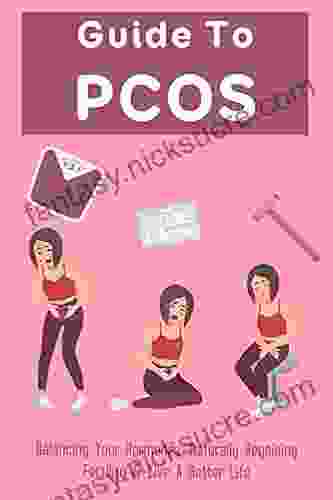
 Sammy Powell
Sammy PowellBalancing Your Hormones Naturally: Regaining Fertility...
Hormones play a vital role in our...

 Kendall Ward
Kendall WardThe Other Baby Book: A Comprehensive Guide to Baby's...
The Other Baby...

 Kenneth Parker
Kenneth ParkerA Comprehensive Guide to Yoga Sadhana for Mothers:...
Motherhood is a...
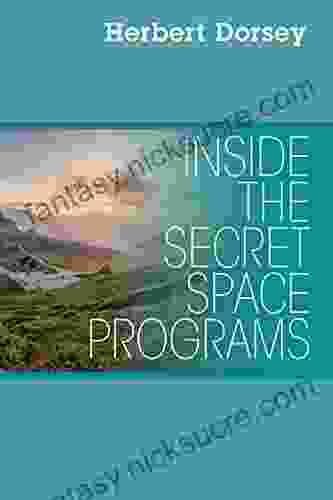
 Neil Parker
Neil ParkerInside the Secret Space Programs
An Exposé...
4.7 out of 5
| Language | : | English |
| File size | : | 1572 KB |
| Text-to-Speech | : | Enabled |
| Screen Reader | : | Supported |
| Enhanced typesetting | : | Enabled |
| Word Wise | : | Enabled |
| Print length | : | 224 pages |


